-
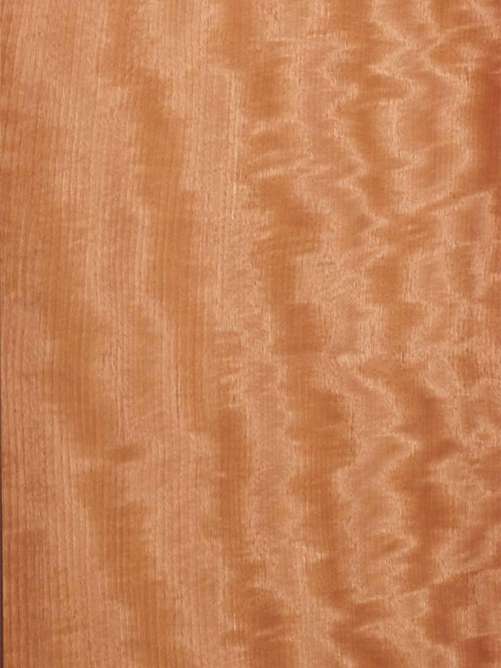 One of the largest trees in equatorial Africa, this tropical hardwood’s immense size ensures large leaves and volumes of veneer well suited for architectural use. Regarded for its shimmering luster that refracts light, this species ranges from pinkish brown to rich red in color with a fine, even texture, and a typically straight grain that may be decorated with a wide range of widely variable figures, including a highly prized Pommele. As with most veneers, almost every log is unique. Learn About Veneer Cut & Matching
One of the largest trees in equatorial Africa, this tropical hardwood’s immense size ensures large leaves and volumes of veneer well suited for architectural use. Regarded for its shimmering luster that refracts light, this species ranges from pinkish brown to rich red in color with a fine, even texture, and a typically straight grain that may be decorated with a wide range of widely variable figures, including a highly prized Pommele. As with most veneers, almost every log is unique. Learn About Veneer Cut & Matching -
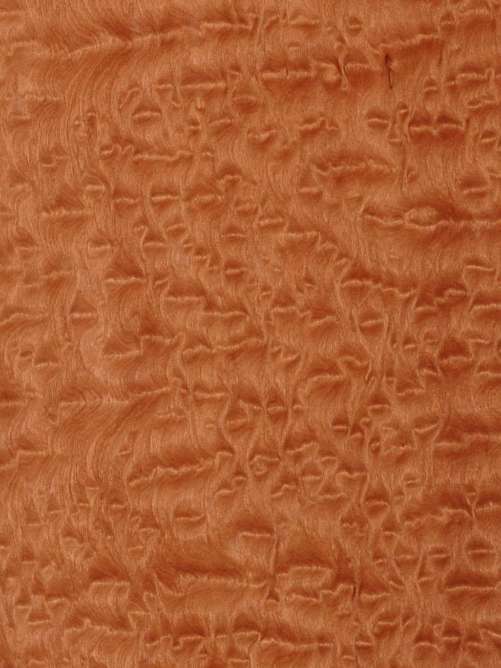 One of the largest trees in equatorial Africa, this tropical hardwood’s immense size ensures large leaves and volumes of veneer well suited for architectural use. Regarded for its shimmering luster that refracts light, this species ranges from pinkish brown to rich red in color with a fine, even texture, and a typically straight grain that may be decorated with a wide range of widely variable figures, including a highly prized Pommele. As with most veneers, almost every log is unique. Learn About Veneer Cut & Matching
One of the largest trees in equatorial Africa, this tropical hardwood’s immense size ensures large leaves and volumes of veneer well suited for architectural use. Regarded for its shimmering luster that refracts light, this species ranges from pinkish brown to rich red in color with a fine, even texture, and a typically straight grain that may be decorated with a wide range of widely variable figures, including a highly prized Pommele. As with most veneers, almost every log is unique. Learn About Veneer Cut & Matching -
 Mappa burl is actually the burl wood of a European poplar. This highly decorative veneer is particularly contrasty—its light brown heartwood is peppered by an unusual darker, bark-like pattern of tight clusters. This burl is stunning—an extraordinary and unexpected choice for furniture, cabinetry, and architectural applications. Learn About Veneer Cut & Matching
Mappa burl is actually the burl wood of a European poplar. This highly decorative veneer is particularly contrasty—its light brown heartwood is peppered by an unusual darker, bark-like pattern of tight clusters. This burl is stunning—an extraordinary and unexpected choice for furniture, cabinetry, and architectural applications. Learn About Veneer Cut & Matching -
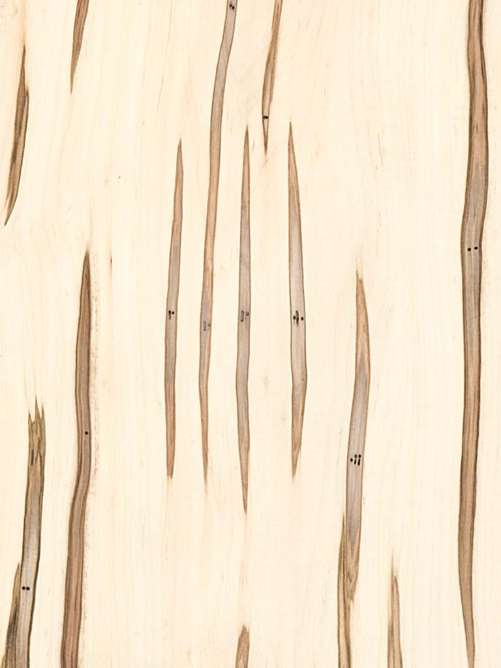 From the same tree that produces maple syrup, comes this beautiful veneer that ranges in color from snow white to warm yellow; has a close, fine luminous texture; and a lovely straight grain that may be interspersed with natural character marks. A wide range of gorgeous figures and wild grain distortions—from curly to bird’s eye to maple burl—are sought after for distinctive paneling and furniture. Flat cut maple displays the distinctive heart or cathedral pattern. Learn About Veneer Cut & Matching
From the same tree that produces maple syrup, comes this beautiful veneer that ranges in color from snow white to warm yellow; has a close, fine luminous texture; and a lovely straight grain that may be interspersed with natural character marks. A wide range of gorgeous figures and wild grain distortions—from curly to bird’s eye to maple burl—are sought after for distinctive paneling and furniture. Flat cut maple displays the distinctive heart or cathedral pattern. Learn About Veneer Cut & Matching -
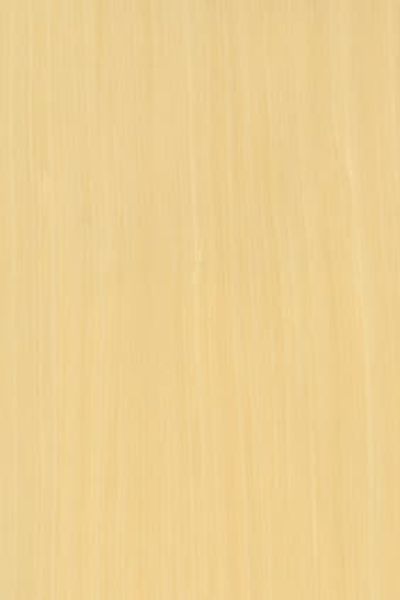 Brookside Veneers, Produced by Alpi Spa. Learn About Veneer Cut & Matching
Brookside Veneers, Produced by Alpi Spa. Learn About Veneer Cut & Matching -
 From the same tree that produces maple syrup, comes this beautiful veneer that ranges in color from snow white to warm yellow; has a close, fine luminous texture; and a lovely straight grain that may be interspersed with natural character marks. A wide range of gorgeous figures and wild grain distortions—from curly to bird’s eye to maple burl—are sought after for distinctive paneling and furniture. Flat cut maple displays the distinctive heart or cathedral pattern. Learn About Veneer Cut & Matching
From the same tree that produces maple syrup, comes this beautiful veneer that ranges in color from snow white to warm yellow; has a close, fine luminous texture; and a lovely straight grain that may be interspersed with natural character marks. A wide range of gorgeous figures and wild grain distortions—from curly to bird’s eye to maple burl—are sought after for distinctive paneling and furniture. Flat cut maple displays the distinctive heart or cathedral pattern. Learn About Veneer Cut & Matching -
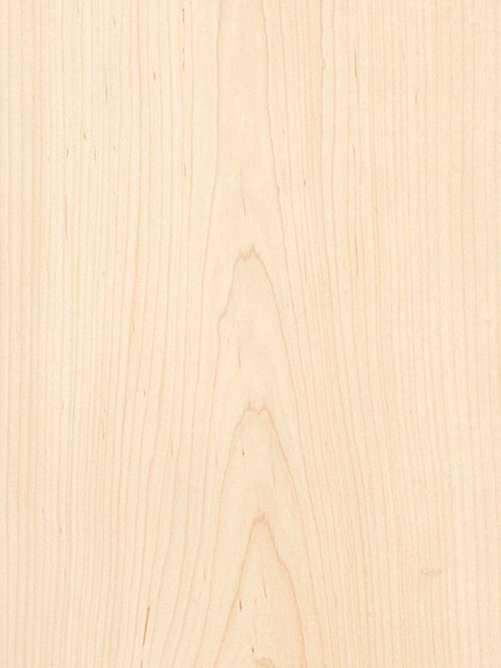 From the same tree that produces maple syrup, comes this beautiful veneer that ranges in color from snow white to warm yellow; has a close, fine luminous texture; and a lovely straight grain that may be interspersed with natural character marks. A wide range of gorgeous figures and wild grain distortions—from curly to bird’s eye to maple burl—are sought after for distinctive paneling and furniture. Flat cut maple displays the distinctive heart or cathedral pattern. Learn About Veneer Cut & Matching
From the same tree that produces maple syrup, comes this beautiful veneer that ranges in color from snow white to warm yellow; has a close, fine luminous texture; and a lovely straight grain that may be interspersed with natural character marks. A wide range of gorgeous figures and wild grain distortions—from curly to bird’s eye to maple burl—are sought after for distinctive paneling and furniture. Flat cut maple displays the distinctive heart or cathedral pattern. Learn About Veneer Cut & Matching -
 From the same tree that produces maple syrup, comes this beautiful veneer that ranges in color from snow white to warm yellow; has a close, fine luminous texture; and a lovely straight grain that may be interspersed with natural character marks. A wide range of gorgeous figures and wild grain distortions—from curly to bird’s eye to maple burl—are sought after for distinctive paneling and furniture. Flat cut maple displays the distinctive heart or cathedral pattern. Learn About Veneer Cut & Matching
From the same tree that produces maple syrup, comes this beautiful veneer that ranges in color from snow white to warm yellow; has a close, fine luminous texture; and a lovely straight grain that may be interspersed with natural character marks. A wide range of gorgeous figures and wild grain distortions—from curly to bird’s eye to maple burl—are sought after for distinctive paneling and furniture. Flat cut maple displays the distinctive heart or cathedral pattern. Learn About Veneer Cut & Matching -
 From the same tree that produces maple syrup, comes this beautiful veneer that ranges in color from snow white to warm yellow; has a close, fine luminous texture; and a lovely straight grain that may be interspersed with natural character marks. A wide range of gorgeous figures and wild grain distortions—from curly to bird’s eye to maple burl—are sought after for distinctive paneling and furniture. Flat cut maple displays the distinctive heart or cathedral pattern. Learn About Veneer Cut & Matching
From the same tree that produces maple syrup, comes this beautiful veneer that ranges in color from snow white to warm yellow; has a close, fine luminous texture; and a lovely straight grain that may be interspersed with natural character marks. A wide range of gorgeous figures and wild grain distortions—from curly to bird’s eye to maple burl—are sought after for distinctive paneling and furniture. Flat cut maple displays the distinctive heart or cathedral pattern. Learn About Veneer Cut & Matching -
 From the same tree that produces maple syrup, comes this beautiful veneer that ranges in color from snow white to warm yellow; has a close, fine luminous texture; and a lovely straight grain that may be interspersed with natural character marks. A wide range of gorgeous figures and wild grain distortions—from curly to bird’s eye to maple burl—are sought after for distinctive paneling and furniture. Flat cut maple displays the distinctive heart or cathedral pattern. Learn About Veneer Cut & Matching
From the same tree that produces maple syrup, comes this beautiful veneer that ranges in color from snow white to warm yellow; has a close, fine luminous texture; and a lovely straight grain that may be interspersed with natural character marks. A wide range of gorgeous figures and wild grain distortions—from curly to bird’s eye to maple burl—are sought after for distinctive paneling and furniture. Flat cut maple displays the distinctive heart or cathedral pattern. Learn About Veneer Cut & Matching -
 Brookside Veneers, Produced by Alpi Spa. Learn About Veneer Cut & Matching
Brookside Veneers, Produced by Alpi Spa. Learn About Veneer Cut & Matching -
 Also called African cherry, Makore shares the light pink to deep red coloring, dark growth lines, and small pores common to cherry. In architectural installations, it has the added benefit of availability in large sizes not found in American cherry. Cut on the quarter, Makore shows a contrasting stripe that may be plain or crossed with a variety of decorative figures. Flat cut, it bears the distinctive cathedral grain pattern. Learn About Veneer Cut & Matching
Also called African cherry, Makore shares the light pink to deep red coloring, dark growth lines, and small pores common to cherry. In architectural installations, it has the added benefit of availability in large sizes not found in American cherry. Cut on the quarter, Makore shows a contrasting stripe that may be plain or crossed with a variety of decorative figures. Flat cut, it bears the distinctive cathedral grain pattern. Learn About Veneer Cut & Matching -
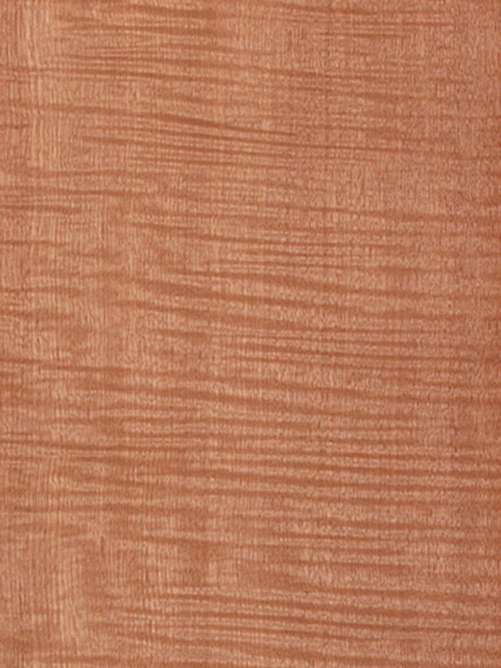 Also called African cherry, Makore shares the light pink to deep red coloring, dark growth lines, and small pores common to cherry. In architectural installations, it has the added benefit of availability in large sizes not found in American cherry. Cut on the quarter, Makore shows a contrasting stripe that may be plain or crossed with a variety of decorative figures. Flat cut, it bears the distinctive cathedral grain pattern. Learn About Veneer Cut & Matching
Also called African cherry, Makore shares the light pink to deep red coloring, dark growth lines, and small pores common to cherry. In architectural installations, it has the added benefit of availability in large sizes not found in American cherry. Cut on the quarter, Makore shows a contrasting stripe that may be plain or crossed with a variety of decorative figures. Flat cut, it bears the distinctive cathedral grain pattern. Learn About Veneer Cut & Matching -
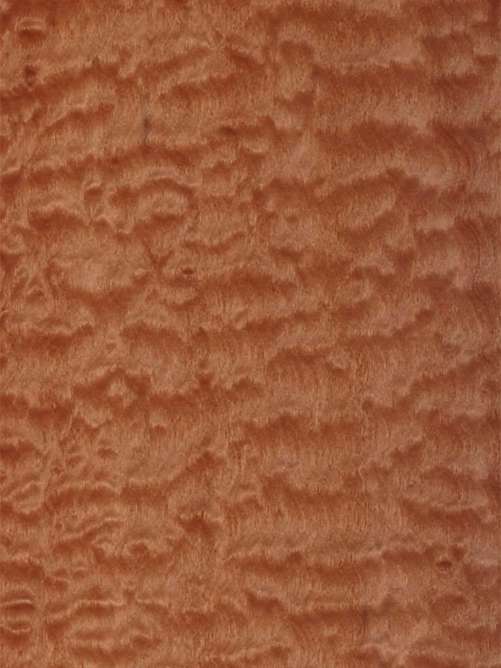 Also called African cherry, Makore shares the light pink to deep red coloring, dark growth lines, and small pores common to cherry. In architectural installations, it has the added benefit of availability in large sizes not found in American cherry. Cut on the quarter, Makore shows a contrasting stripe that may be plain or crossed with a variety of decorative figures. Flat cut, it bears the distinctive cathedral grain pattern. Learn About Veneer Cut & Matching
Also called African cherry, Makore shares the light pink to deep red coloring, dark growth lines, and small pores common to cherry. In architectural installations, it has the added benefit of availability in large sizes not found in American cherry. Cut on the quarter, Makore shows a contrasting stripe that may be plain or crossed with a variety of decorative figures. Flat cut, it bears the distinctive cathedral grain pattern. Learn About Veneer Cut & Matching -
 Also called African cherry, Makore shares the light pink to deep red coloring, dark growth lines, and small pores common to cherry. In architectural installations, it has the added benefit of availability in large sizes not found in American cherry. Cut on the quarter, Makore shows a contrasting stripe that may be plain or crossed with a variety of decorative figures. Flat cut, it bears the distinctive cathedral grain pattern. Learn About Veneer Cut & Matching
Also called African cherry, Makore shares the light pink to deep red coloring, dark growth lines, and small pores common to cherry. In architectural installations, it has the added benefit of availability in large sizes not found in American cherry. Cut on the quarter, Makore shows a contrasting stripe that may be plain or crossed with a variety of decorative figures. Flat cut, it bears the distinctive cathedral grain pattern. Learn About Veneer Cut & Matching -
 Also called African cherry, Makore shares the light pink to deep red coloring, dark growth lines, and small pores common to cherry. In architectural installations, it has the added benefit of availability in large sizes not found in American cherry. Cut on the quarter, Makore shows a contrasting stripe that may be plain or crossed with a variety of decorative figures. Flat cut, it bears the distinctive cathedral grain pattern. Learn About Veneer Cut & Matching
Also called African cherry, Makore shares the light pink to deep red coloring, dark growth lines, and small pores common to cherry. In architectural installations, it has the added benefit of availability in large sizes not found in American cherry. Cut on the quarter, Makore shows a contrasting stripe that may be plain or crossed with a variety of decorative figures. Flat cut, it bears the distinctive cathedral grain pattern. Learn About Veneer Cut & Matching -
 Equally apt in contemporary, global, and traditional settings, mahogany has been traded from African ports for hundreds of years. Typically red to red-brown, and darker than South American mahoganies, this species often develops a plain to ropey stripe and may be marked with highly decorative cross figuring. Crotch veneers with vivid, flame-like patterns are one of nature’s most beautiful works of art. Learn About Veneer Cut & Matching
Equally apt in contemporary, global, and traditional settings, mahogany has been traded from African ports for hundreds of years. Typically red to red-brown, and darker than South American mahoganies, this species often develops a plain to ropey stripe and may be marked with highly decorative cross figuring. Crotch veneers with vivid, flame-like patterns are one of nature’s most beautiful works of art. Learn About Veneer Cut & Matching -
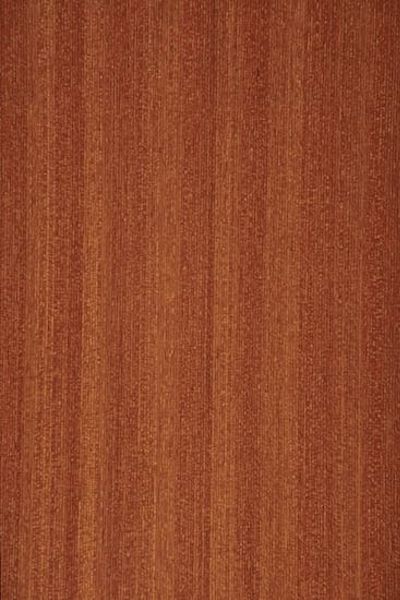 Brookside Veneers, Produced by Alpi Spa. Learn About Veneer Cut & Matching
Brookside Veneers, Produced by Alpi Spa. Learn About Veneer Cut & Matching -
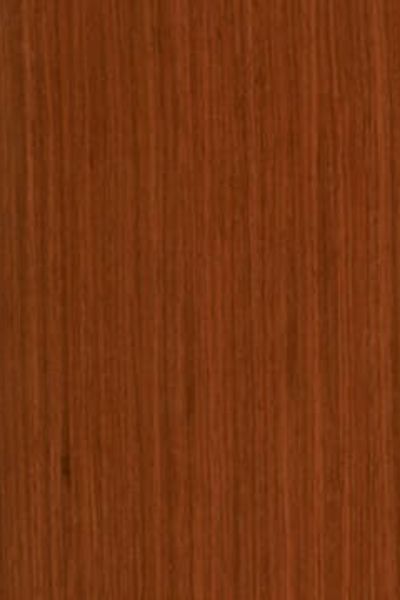 Brookside Veneers, Produced by Alpi Spa. Learn About Veneer Cut & Matching
Brookside Veneers, Produced by Alpi Spa. Learn About Veneer Cut & Matching -
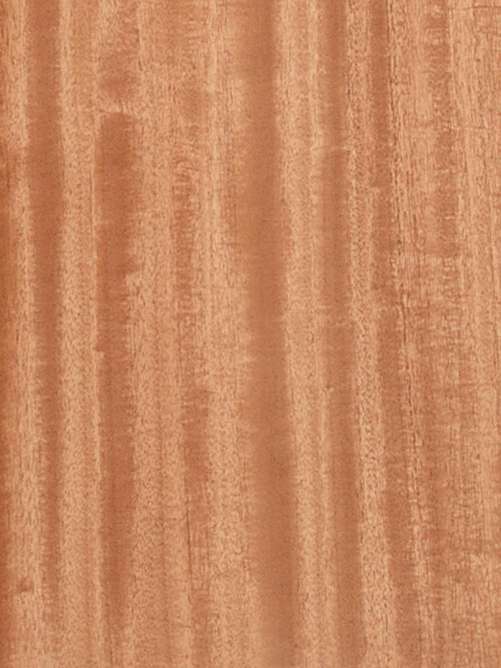 Equally apt in contemporary, global, and traditional settings, mahogany has been traded from African ports for hundreds of years. Typically red to red-brown, and darker than South American mahoganies, this species often develops a plain to ropey stripe and may be marked with highly decorative cross figuring. Crotch veneers with vivid, flame-like patterns are one of nature’s most beautiful works of art. Learn About Veneer Cut & Matching
Equally apt in contemporary, global, and traditional settings, mahogany has been traded from African ports for hundreds of years. Typically red to red-brown, and darker than South American mahoganies, this species often develops a plain to ropey stripe and may be marked with highly decorative cross figuring. Crotch veneers with vivid, flame-like patterns are one of nature’s most beautiful works of art. Learn About Veneer Cut & Matching -
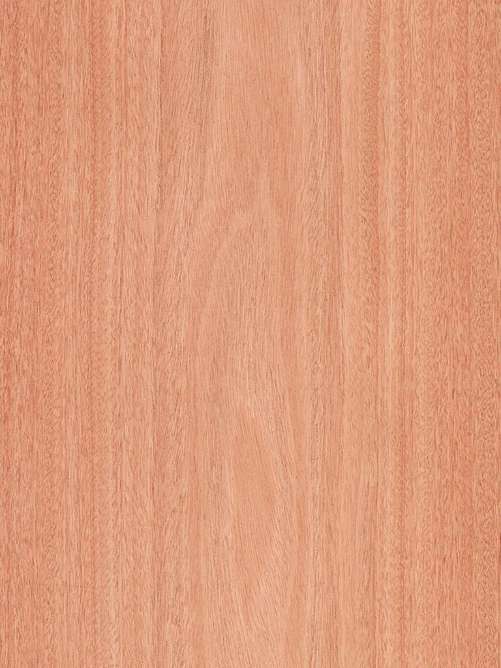 Equally apt in contemporary, global, and traditional settings, mahogany has been traded from African ports for hundreds of years. Typically red to red-brown, and darker than South American mahoganies, this species often develops a plain to ropey stripe and may be marked with highly decorative cross figuring. Crotch veneers with vivid, flame-like patterns are one of nature’s most beautiful works of art. Learn About Veneer Cut & Matching
Equally apt in contemporary, global, and traditional settings, mahogany has been traded from African ports for hundreds of years. Typically red to red-brown, and darker than South American mahoganies, this species often develops a plain to ropey stripe and may be marked with highly decorative cross figuring. Crotch veneers with vivid, flame-like patterns are one of nature’s most beautiful works of art. Learn About Veneer Cut & Matching -
 Equally apt in contemporary, global, and traditional settings, mahogany has been traded from African ports for hundreds of years. Typically red to red-brown, and darker than South American mahoganies, this species often develops a plain to ropey stripe and may be marked with highly decorative cross figuring. Crotch veneers with vivid, flame-like patterns are one of nature’s most beautiful works of art. Learn About Veneer Cut & Matching
Equally apt in contemporary, global, and traditional settings, mahogany has been traded from African ports for hundreds of years. Typically red to red-brown, and darker than South American mahoganies, this species often develops a plain to ropey stripe and may be marked with highly decorative cross figuring. Crotch veneers with vivid, flame-like patterns are one of nature’s most beautiful works of art. Learn About Veneer Cut & Matching -
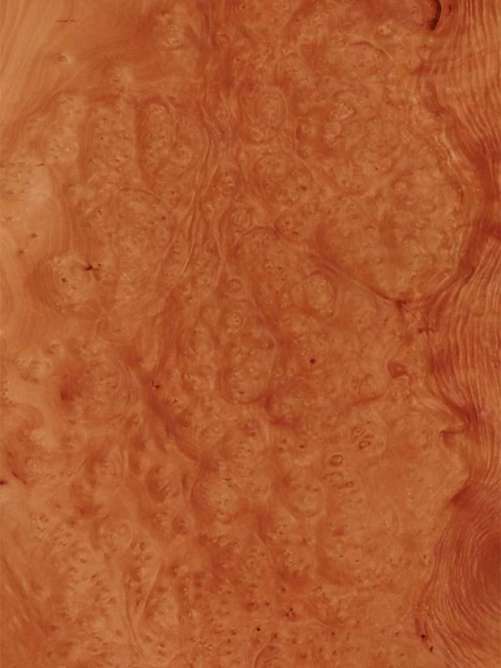 A very little veneer is produced from the trunk, but large growths at the base of the madrona produce this remarkable burl veneer. In what some believe looks like an overhead view of a hilly landscape intertwined with waterways of swirly grain, this warm, inviting, and the choice veneer is highly sought after for high-end architectural installations and custom millwork. Learn About Veneer Cut & Matching
A very little veneer is produced from the trunk, but large growths at the base of the madrona produce this remarkable burl veneer. In what some believe looks like an overhead view of a hilly landscape intertwined with waterways of swirly grain, this warm, inviting, and the choice veneer is highly sought after for high-end architectural installations and custom millwork. Learn About Veneer Cut & Matching -
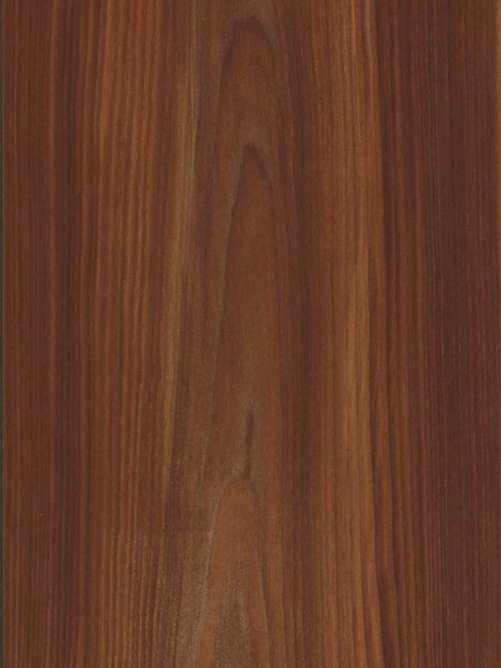 Larch is an exceptionally straight-grained veneer with a reddish-brown heartwood and thin, yellow-white sapwood. This tall, straight tree grows to exceptional heights, producing long lengths of clear veneer, primarily from the heartwood of the tree. Fumed, the typically medium colored wood turns a rich, dark, chocolate brown color reminiscent of African or tropical woods. Learn About Veneer Cut & Matching
Larch is an exceptionally straight-grained veneer with a reddish-brown heartwood and thin, yellow-white sapwood. This tall, straight tree grows to exceptional heights, producing long lengths of clear veneer, primarily from the heartwood of the tree. Fumed, the typically medium colored wood turns a rich, dark, chocolate brown color reminiscent of African or tropical woods. Learn About Veneer Cut & Matching -
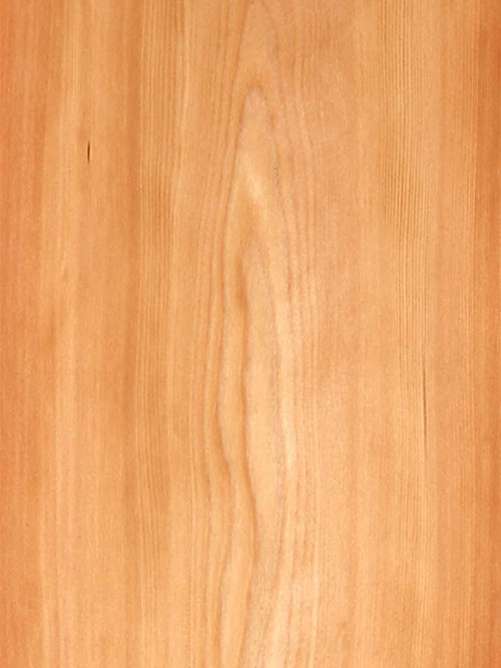 Larch is an exceptionally straight-grained veneer with a reddish-brown heartwood and thin, yellow-white sapwood. This tall, straight tree grows to exceptional heights, producing long lengths of clear veneer, primarily from the heartwood of the tree. Fumed, the typically medium colored wood turns a rich, dark, chocolate brown color reminiscent of African or tropical woods. Learn About Veneer Cut & Matching
Larch is an exceptionally straight-grained veneer with a reddish-brown heartwood and thin, yellow-white sapwood. This tall, straight tree grows to exceptional heights, producing long lengths of clear veneer, primarily from the heartwood of the tree. Fumed, the typically medium colored wood turns a rich, dark, chocolate brown color reminiscent of African or tropical woods. Learn About Veneer Cut & Matching -
 Lacewood is an uncommon veneer with conspicuous flecking that resembles lace when quarter cut. Reddish-brown with a silvery sheen, this striking veneer has a straight grain and small flake–the result of cutting through the medullary ray, which is especially pronounced in the species. Lacewood is always quarter cut and can be fumed to a rich chocolate brown. Learn About Veneer Cut & Matching
Lacewood is an uncommon veneer with conspicuous flecking that resembles lace when quarter cut. Reddish-brown with a silvery sheen, this striking veneer has a straight grain and small flake–the result of cutting through the medullary ray, which is especially pronounced in the species. Lacewood is always quarter cut and can be fumed to a rich chocolate brown. Learn About Veneer Cut & Matching -
 Lacewood is an uncommon veneer with conspicuous flecking that resembles lace when quarter cut. Reddish-brown with a silvery sheen, this striking veneer has a straight grain and small flake–the result of cutting through the medullary ray, which is especially pronounced in the species. Lacewood is always quarter cut and can be fumed to a rich chocolate brown. Learn About Veneer Cut & Matching
Lacewood is an uncommon veneer with conspicuous flecking that resembles lace when quarter cut. Reddish-brown with a silvery sheen, this striking veneer has a straight grain and small flake–the result of cutting through the medullary ray, which is especially pronounced in the species. Lacewood is always quarter cut and can be fumed to a rich chocolate brown. Learn About Veneer Cut & Matching -
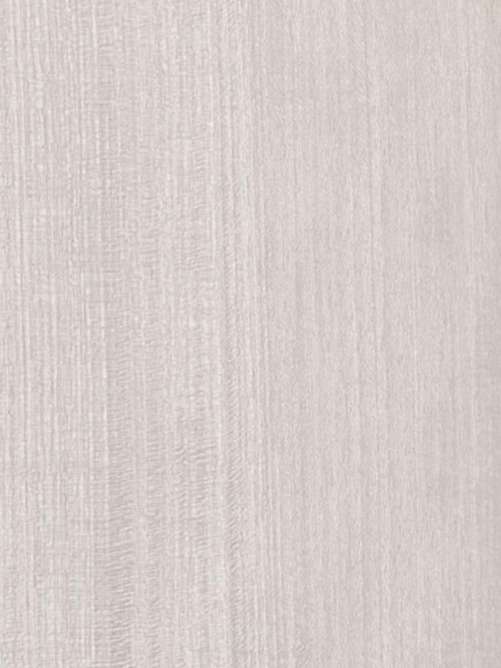 The wood is yellowish-white to cream in color and becomes yellowish-grey when steamed. Sliced veneers are used for door skins and inner surface veneers. The rotary veneer is used for plywood panels and bleaching + dying. Learn About Veneer Cut & Matching
The wood is yellowish-white to cream in color and becomes yellowish-grey when steamed. Sliced veneers are used for door skins and inner surface veneers. The rotary veneer is used for plywood panels and bleaching + dying. Learn About Veneer Cut & Matching -
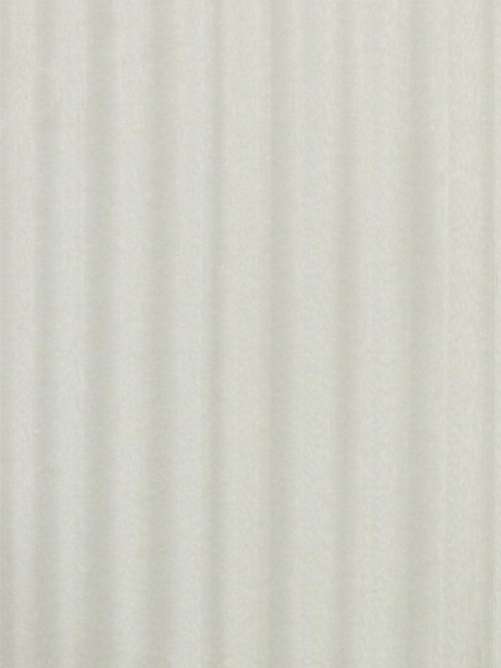 The wood is yellowish-white to cream in color and becomes yellowish-grey when steamed. Sliced veneers are used for door skins and inner surface veneers. The rotary veneer is used for plywood panels and bleaching + dying. Learn About Veneer Cut & Matching
The wood is yellowish-white to cream in color and becomes yellowish-grey when steamed. Sliced veneers are used for door skins and inner surface veneers. The rotary veneer is used for plywood panels and bleaching + dying. Learn About Veneer Cut & Matching -
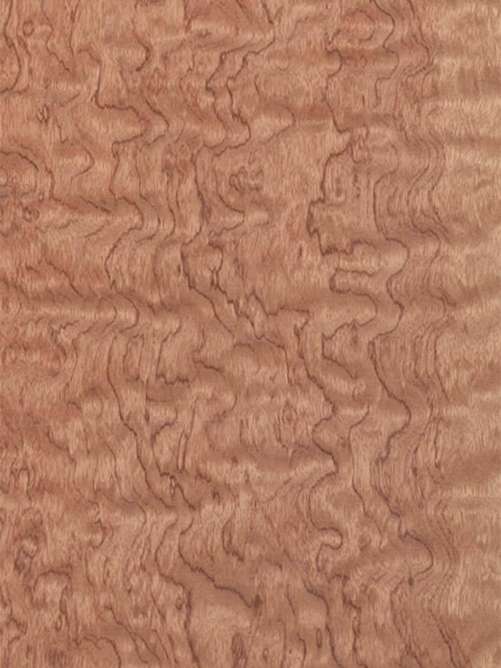 Kevazinga is the name given to Bubinga veneer that has been rotary cut to capitalize on its eccentric grain patterns. This exceptional veneer is red-brown in color; with dark veining, a coarse texture, and a lively, swirly grain interspersed with “peanut” or Pommele markings. Highly sought after for high-end cabinetry and architectural use. Learn About Veneer Cut & Matching
Kevazinga is the name given to Bubinga veneer that has been rotary cut to capitalize on its eccentric grain patterns. This exceptional veneer is red-brown in color; with dark veining, a coarse texture, and a lively, swirly grain interspersed with “peanut” or Pommele markings. Highly sought after for high-end cabinetry and architectural use. Learn About Veneer Cut & Matching -
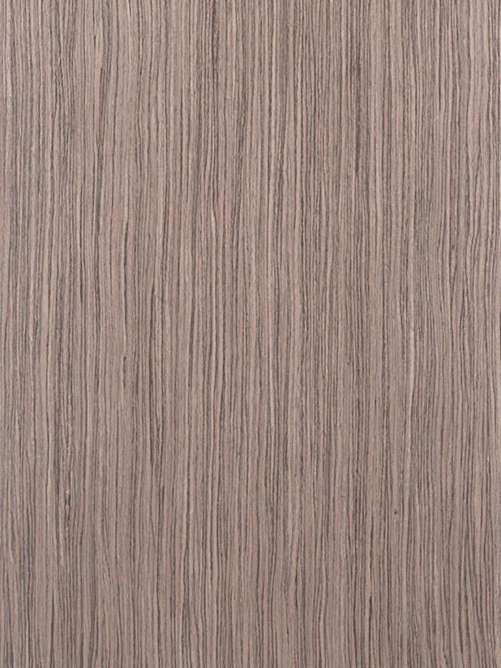 Reconstituted Veneer is a rotary cut veneer created from fast-growing secondary species, then dyed, layered, laminated, and laid up with grain that replicates a natural species. It offers outstanding consistency in color and grain. The pattern for Kalahari was previously owned by an exotic car manufacturer for vehicle interiors and is a one-of-a-kind offering that won’t be produced in the future. This recon veneer is in the grey color range, somewhat resembling Walnut, and can be stained. It is available in 9-foot lengths. Learn About Veneer Cut & Matching
Reconstituted Veneer is a rotary cut veneer created from fast-growing secondary species, then dyed, layered, laminated, and laid up with grain that replicates a natural species. It offers outstanding consistency in color and grain. The pattern for Kalahari was previously owned by an exotic car manufacturer for vehicle interiors and is a one-of-a-kind offering that won’t be produced in the future. This recon veneer is in the grey color range, somewhat resembling Walnut, and can be stained. It is available in 9-foot lengths. Learn About Veneer Cut & Matching -
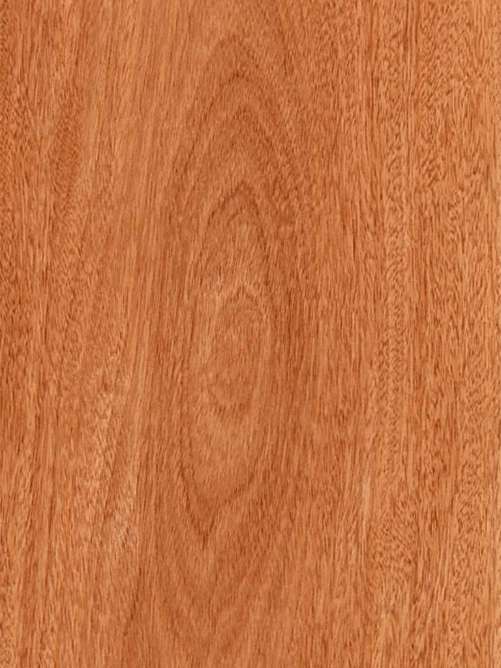 A relative newcomer to the US market, Jequitiba has grown in popularity in the last decade as an alternative to mahogany for rich, traditional interiors. The reddish to purple-brown heartwood, sometimes with dark streaks, varies only subtly from its paler sapwood. It has a medium luster, fine grain, and soft, smooth texture. These large trees produce ample size leaves for large installations. Flat cut, it has a pleasing cathedral figure; quartered wood may be figured. Learn About Veneer Cut & Matching
A relative newcomer to the US market, Jequitiba has grown in popularity in the last decade as an alternative to mahogany for rich, traditional interiors. The reddish to purple-brown heartwood, sometimes with dark streaks, varies only subtly from its paler sapwood. It has a medium luster, fine grain, and soft, smooth texture. These large trees produce ample size leaves for large installations. Flat cut, it has a pleasing cathedral figure; quartered wood may be figured. Learn About Veneer Cut & Matching -
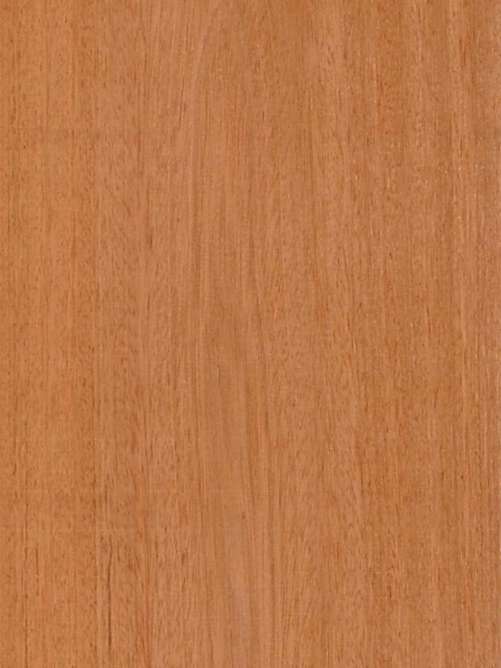 This tropical evergreen grows to impressive heights in consistently cylindrical trunks, making it ideal for veneer production for architectural use. It has an intense, warm, reddish-brown color—much like cherry—with contrasting occasional gray-brown streaks. Jatoba has a medium texture, interlocked grain, and very desirable natural luster. Learn About Veneer Cut & Matching
This tropical evergreen grows to impressive heights in consistently cylindrical trunks, making it ideal for veneer production for architectural use. It has an intense, warm, reddish-brown color—much like cherry—with contrasting occasional gray-brown streaks. Jatoba has a medium texture, interlocked grain, and very desirable natural luster. Learn About Veneer Cut & Matching -
 One of the hardest woods in the world, ipé is found throughout Central and South America, although most commercial wood comes from Brazil. While the tree itself is large, defect-free sections for veneers are relatively small. Extremely dark, the colors can vary from reddish-brown to green-black with subtle but distinctive stripes. Flat cut veneer produces the characteristic cathedral grain. Quartered, it can produce a plain or broken stripe figure. Learn About Veneer Cut & Matching
One of the hardest woods in the world, ipé is found throughout Central and South America, although most commercial wood comes from Brazil. While the tree itself is large, defect-free sections for veneers are relatively small. Extremely dark, the colors can vary from reddish-brown to green-black with subtle but distinctive stripes. Flat cut veneer produces the characteristic cathedral grain. Quartered, it can produce a plain or broken stripe figure. Learn About Veneer Cut & Matching -
 While most hickory is cut for lumber due to its strength and density, this traditional domestic beauty is increasingly available in the veneer. Hickory has a notable contrast between its reddish heartwood and lighter sapwood. The grain is usually straight but can be wavy or irregular in some flitches. The texture is coarse and porous with a matte finish. This is a quintessential domestic wood—lively in appearance and rich in American woodworking tradition. Learn About Veneer Cut & Matching
While most hickory is cut for lumber due to its strength and density, this traditional domestic beauty is increasingly available in the veneer. Hickory has a notable contrast between its reddish heartwood and lighter sapwood. The grain is usually straight but can be wavy or irregular in some flitches. The texture is coarse and porous with a matte finish. This is a quintessential domestic wood—lively in appearance and rich in American woodworking tradition. Learn About Veneer Cut & Matching -
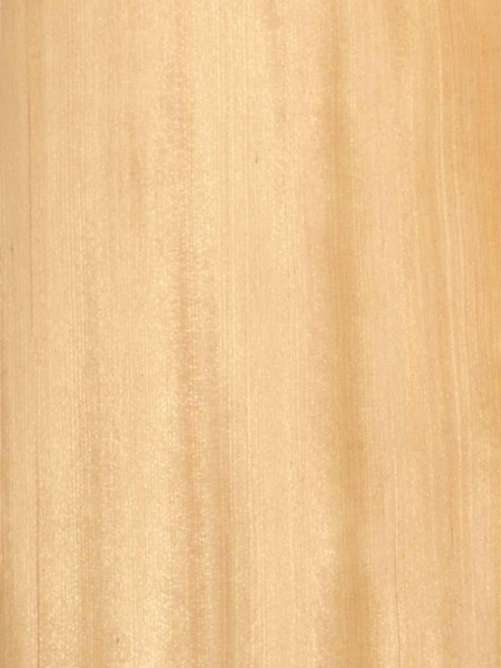 The largest of the hemlocks, this hemlock grows over 300’ tall from the Rockies to the Pacific coast. It has a straight grain, tightly spaced growth rings, somewhat coarse texture, and flat, uniform appearance with little distinction between the heartwood and sapwood. Hemlock takes finishing well and can be stained in virtually any color, making it an adaptable wood for interior projects. Learn About Veneer Cut & Matching
The largest of the hemlocks, this hemlock grows over 300’ tall from the Rockies to the Pacific coast. It has a straight grain, tightly spaced growth rings, somewhat coarse texture, and flat, uniform appearance with little distinction between the heartwood and sapwood. Hemlock takes finishing well and can be stained in virtually any color, making it an adaptable wood for interior projects. Learn About Veneer Cut & Matching

